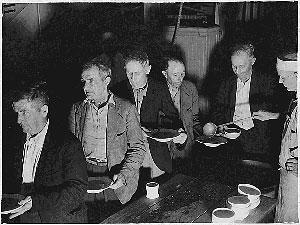The biology and economics of year-end giving
Image of a soup kitchen.
This article was originally covered by PRI’s The Takeaway. For more, listen to the audio above.
Last year, many charitable organizations hit rock bottom. Charitable giving was at a 20-year low, economics correspondent Beth Kobliner told PRI’s The Takeaway. “People were not giving.”
In spite of the recession, there still were reasons to hope. Activist Majora Carter observes: “Even though it feels like the issues are huge and don’t get any smaller, people still feel compelled to give.”
That urge to give is actually hardwired in the human mind, according to Stephanie Brown, an Associate Professor of Medical Humanities, Compassionate Care, and Bioethics at Stony Brook University. Brown describes giving as a “natural, organic thing to do.”
Giving poses an evolutionary problem, according to Brown, because it risks exploitation. And there are factors that can inhibit the impulse to give. In general, though, Brown says that people give because of “a sense of interdependence with the recipient, or even a social bond or close relationship that we might form.”
When the amount of money that people donated plummeted last year, people still found ways to give. According to Kobliner, volunteerism went way up. People tended to give their time instead of giving money. And instead of hiring people, organizations looked to volunteers to help them do their work.
The end of the year is “a tricky time of year when it comes to giving,” Kobliner says. “People are bombarded, and you have to be selective in how you give.” Kobliner suggests making a giving budget, and not being embarrassed about saying no to charities. And even if people can’t give money, there’s still a possibility that they can donate their time.
“The Takeaway” is a national morning news program, delivering the news and analysis you need to catch up, start your day, and prepare for what’s ahead. The show is a co-production of WNYC and PRI, in editorial collaboration with the BBC, The New York Times Radio, and WGBH.
